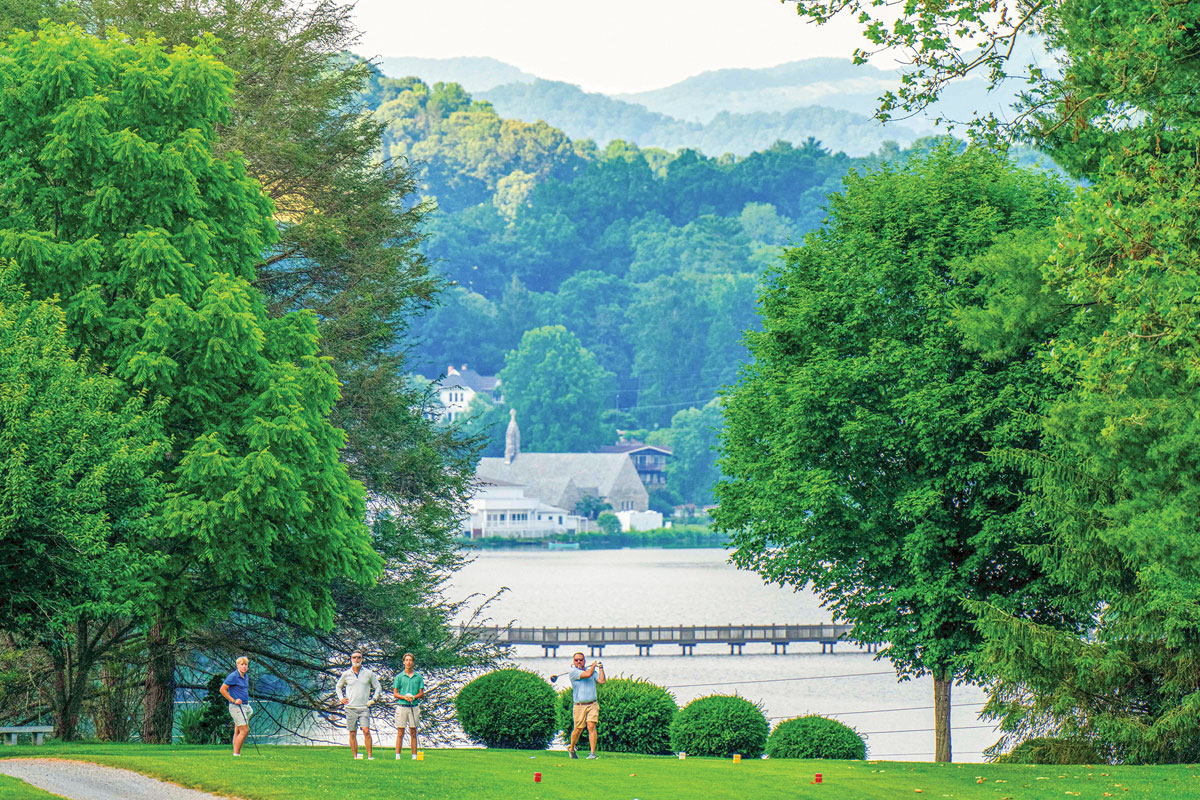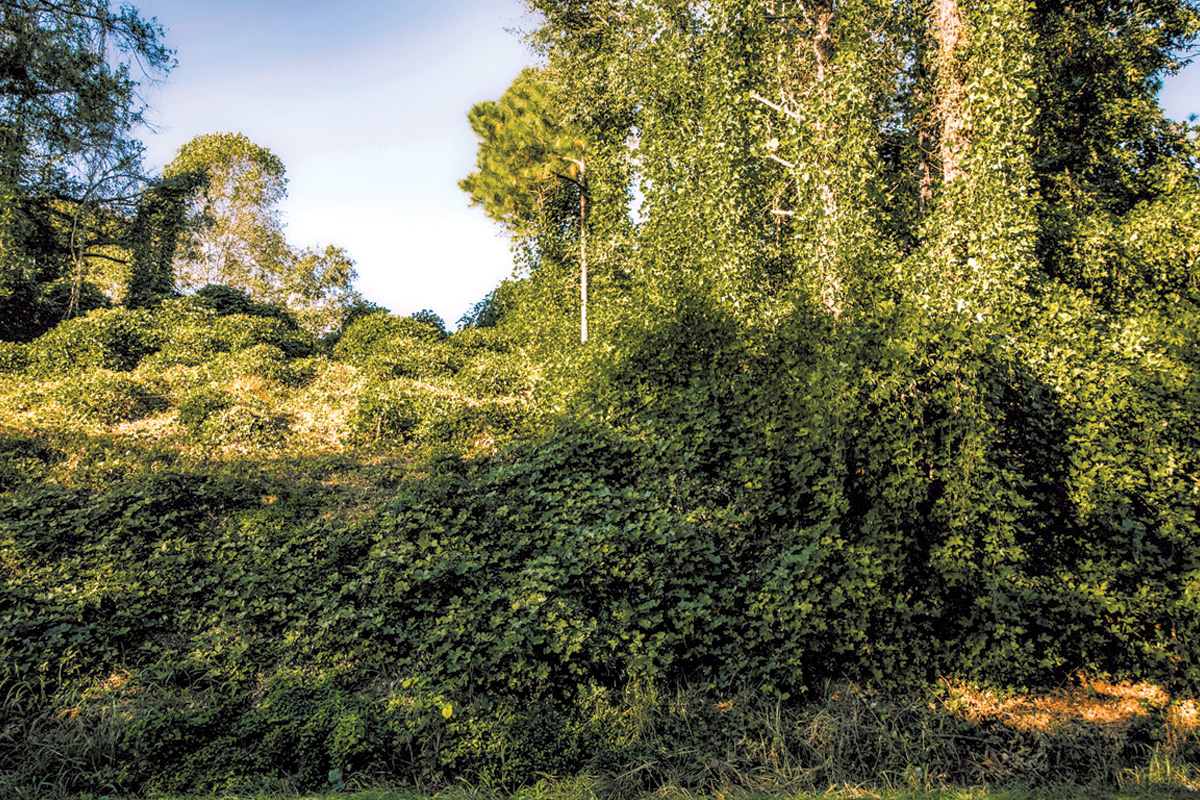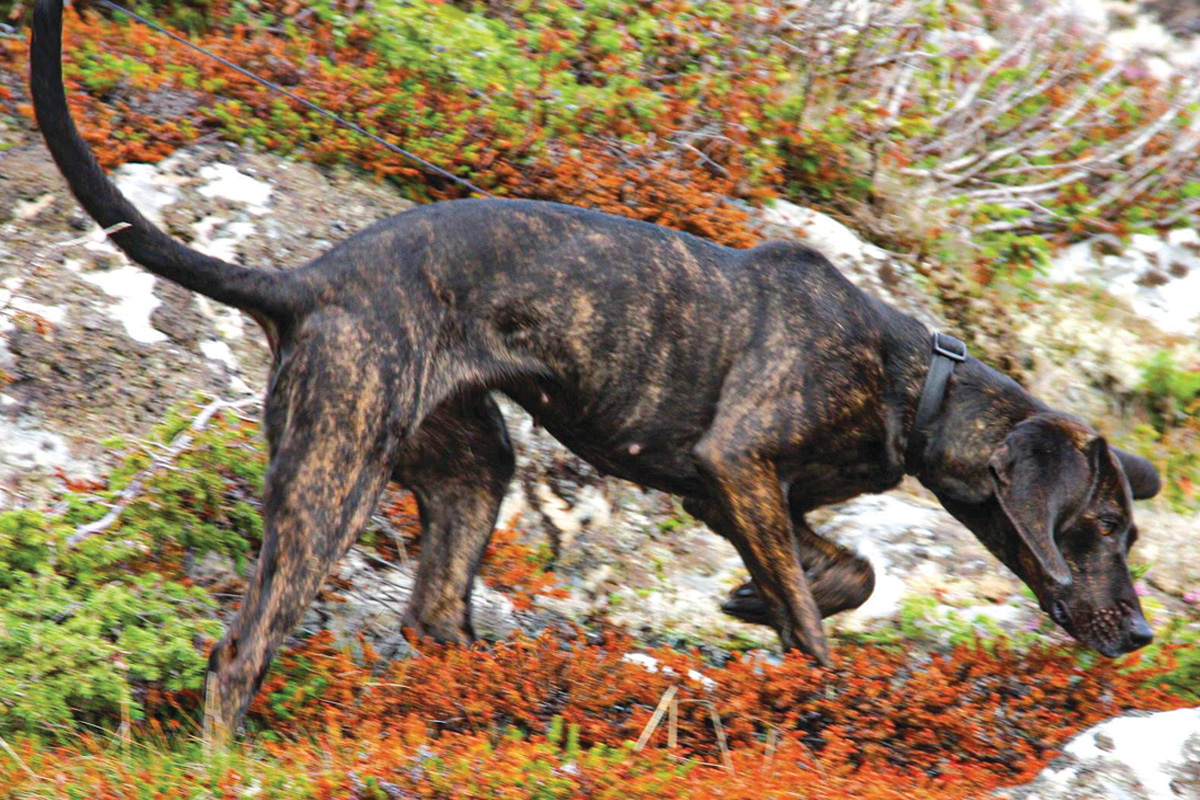The institution on the corner
 The Jarrett House has stood in Dillsboro since 1884. Since before Dillsboro was Dillsboro.
The Jarrett House has stood in Dillsboro since 1884. Since before Dillsboro was Dillsboro.
Rooted in history, growing into the future: Dillsboro celebrates its past while working toward a better future
 Dillsboro sits at the crossroads of U.S. 441 and N.C. 23. Nestled between the past and future, it is a town that continues to evolve.
Dillsboro sits at the crossroads of U.S. 441 and N.C. 23. Nestled between the past and future, it is a town that continues to evolve.
“I think it’s just a classic, old American town. Laid-back,” said Jim Hartbarger, sitting in the parlor of the Jarrett House.
SEE ALSO: WCU lends Dillsboro a hand | Celebrating the 125th | The institution on the corner
Play me that mountain music: Carroll Best and The White Oak String Band
 French Kirkpatrick can sum up Carroll Best.
French Kirkpatrick can sum up Carroll Best.
“What he did with the banjo was above and beyond,” Kirkpatrick said. “He was the most, probably without a doubt, the most creative banjo player I was ever in a room with.”
Recently at his home in Ironduff, a mountain community a few miles outside of downtown Waynesville, Kirkpatrick, an acclaimed musician in his own right, relaxed further back into his couch and reminisced with a smile about his late friend.
WCU: A timeline
 1889 — Cullowhee Academy opens with 18 students and 1 teacher
1889 — Cullowhee Academy opens with 18 students and 1 teacher
Journey to the 21st century: Two-room school transforms to major regional university
 By Randall Holcombe • WCU
By Randall Holcombe • WCU
The little school that was the forerunner of Western Carolina University was called Cullowhee Academy. Its location is marked by a stone memorial, erected in 1934, that sits in a garden area between the university’s steam plant and Breese Gymnasium. The memorial honors Robert Lee Madison, who was 22 when he taught his first class of 18 students at the academy on Aug. 5, 1889.
The ‘Cullowhee idea’: Cullowhee institution traces evolution from a rural schoolhouse to regional powerhouse
 It’s August, freshman move-in day, and Western Carolina University is welcoming a new class of freshmen to campus. It’s what WCU Chancellor David Belcher calls a “huge day.”
It’s August, freshman move-in day, and Western Carolina University is welcoming a new class of freshmen to campus. It’s what WCU Chancellor David Belcher calls a “huge day.”
“We’ve got students coming in right and left,” says Belcher.
One of those students is Kailey Spencer. She plans to study forensics and is looking forward to the lab work.
Taking matters into their own hands
 It promised to be one of the most riveting nights of the year for members of the Jackson County Genealogical Society.
It promised to be one of the most riveting nights of the year for members of the Jackson County Genealogical Society.
Half a dozen men filed through the door of the Sylva library hauling boxes and pulling hand trucks bulging with old tools and implements, some of them scrounged from their papaw’s blacksmith shop or granny’s cellar, and others collected over the years from auctions or relatives or flea markets, because there’s really no such thing as too many tools.
“People could stay for hours and talk about these items and their uses and the stories that go with them,” said Tim Osment, president of the genealogical society. “The tool itself represents a time when folks used their hands to build their own items. There is a sense of nostalgia that goes with that.”
Getting at the nitty gritty of history
 Regional histories are my favorite literary genre. It’s in them that the nitty-gritty of everyday life is most clearly portrayed. Dr. H.G. Jones’ Scoundrels, Rogues and Heroes of the Old North State (Charleston SC: The History Press, 2005, soft cover, 128 pp., $16.99), edited by K. Randell Jones and Caitlin D. Jones, is a collection of more than 50 such essays. They were selected from a body of work that appeared as a weekly series of columns titled “In the Light of History” published by the Associated Press in newspapers across North Carolina from 1969 to 1986.
Regional histories are my favorite literary genre. It’s in them that the nitty-gritty of everyday life is most clearly portrayed. Dr. H.G. Jones’ Scoundrels, Rogues and Heroes of the Old North State (Charleston SC: The History Press, 2005, soft cover, 128 pp., $16.99), edited by K. Randell Jones and Caitlin D. Jones, is a collection of more than 50 such essays. They were selected from a body of work that appeared as a weekly series of columns titled “In the Light of History” published by the Associated Press in newspapers across North Carolina from 1969 to 1986.
Confederates pushed road over Newfound Gap
On Jan. 12, 1864, a Confederate battery of artillery and about 650 men under the command of Gen. Robert B. Vance crossed the Smokies at Indian Gap — situated at 5,317 feet between Clingmans Dome and Newfound Gap along the high divide between North Carolina and Tennessee — in an attempt to secure provisions, screen the main approaches to North Carolina, and guard the left flank of the Longstreet’s main Confederate force at Greeneville, Tenn.
Front row seat to history
 Randall E. Murff remembers the guns shooting at him.
Randall E. Murff remembers the guns shooting at him.
“The Germans really could shoot those guns, they were good,” he said. “If you gave them 17 seconds, they’d knock you right down.”






















